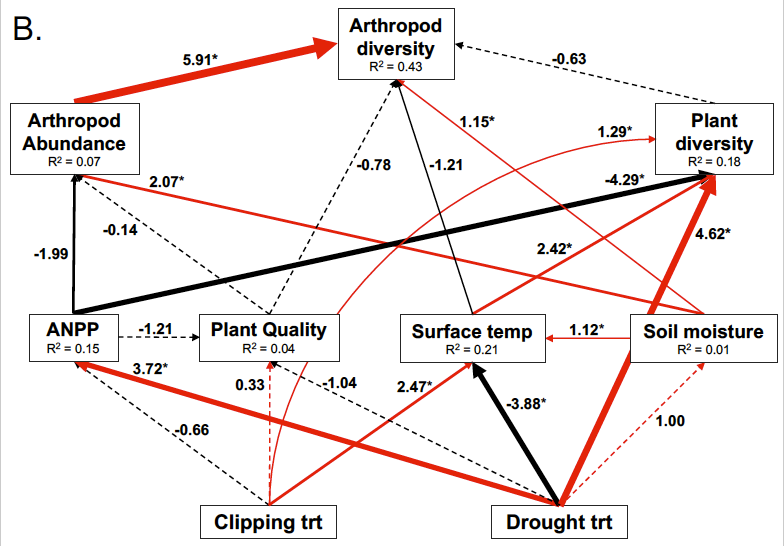A synthesis paper led my myself, and 15 co-authors is now out in Proceedings of the Royal Society B: Biological Sciences. This paper examined how different aspects of climate affect phenology across five taxonomic groups encompassing 62 species. Researchers at the Rocky Mountain Biological Laboratory have been collecting phenological data since 1975. Working together, we were able to draw conclusions about how climate is altering phenology in the Crested Butte area of Colorado.
We found that species responses varied significantly across climate factors. While taxa responded to some cues similarly, such as snowmelt date and spring temperatures, other climate cues resulted in differential effects across taxa. Prior summer precipitation delayed first activity of some insects but advanced activity of some amphibians, mammals, and birds. Earlier snowmelt strongly advanced first activity of insects that overwinter as larvae, including Mormon fritillary butterflies, burying beetles, Gillette’s checkerspot butterfly, and flies, as well as plants that flower soon after snowmelt, including spring beauty and dwarf bluebell.
The fact that not all species are responding identically to the changing climate means that in the future some current interactions, such as those between particular wildflowers and pollinators, may no longer occur. Migratory hummingbirds may no longer arrive while glacier lilies are in bloom. Correspondingly, new kinds of interactions will characterize the future East River valley ecosystem as new species move in and current species change their activity periods.
These results emphasize the importance of examining which cues are driving a species’ entire distribution of seasonal activity. Focusing only on cues driving first activity could provide inaccurate predictions for the remainder of a species’ phenological activity. For example, first date of flowering by a wildflower may not be a good predictor of its peak flowering.
Other unexpected results were that there were more important climate drivers of phenology than previous studies have found, that the most important cues could differ among taxa, and that the previous season’s climate could have a significant influence.






